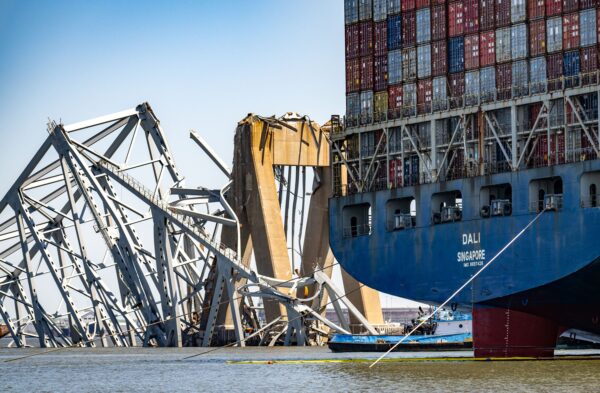
Allen J. Schaben / Los Angeles Times via Getty Images
- The California Pipe Line oil spill may have been the result of a ship's anchor snagging a pipeline.
- California's coastlines have been backed up with ships waiting to port due to widespread supply chain issues.
- Federal and local officials are all lodging investigations into the cause of the oil spill.
California officials are investigating the causes of what has become a major environmental crisis off the coast of Southern California, after a ruptured pipeline leaked 144,000 gallons of crude oil into the ocean, affecting businesses, residents, and local wildlife.
But the culprit may be wider systematic issues affecting supply chains across the entire country.
Evidence gathered from official investigations on Tuesday has suggested that the incident may have been caused by a ship anchor, which hooked on to the pipeline on Saturday, according to the Associated Press.
An anchor hooked onto a portion of the pipe and dragged it along the ocean floor, with the line ending up nearly 32 meters away from its original position.
If an anchor fails to properly latch onto the sea floor, the ship can drag it along the bottom and catch on anything in its way, said California State University Maritime Academy professor Steven Browne. Cargo ships entering the ports of Long Beach and Los Angeles from the south regularly cross above the pipelines, but don't usually run into issues with the pipelines.
"Normally when they drop a ship's anchor, they do so well away from known hazards, such as pipelines and phone cables." Browne, a Master Mariner, said to Insider.
"Due to the congestion in the LA and Long Beach anchorages, most likely they are being directed to anchor in places that they don't normally do so," Browne added. "There is limited room due to the depth of water, inbound and outbound traffic lanes, and regulated navigation areas."
Ships filled nine out of 10 "contingency anchorages" off the coast of Huntington Beach, where the pipeline breach occurred, Bloomberg reported.
California and the rest of the country continue to deal with port congestion, as COVID-19 pandemic-era disruptions, like increased consumer purchases and dockworker labor shortages. Last month, congestion reached an all-time high, with 62 cargo ships waited to dock and unload in the Los Angeles and Long Beach ports. Waterway closures due to the oil spill is may exacerbate those issues.
Requests for comment by the US Coast Guard, which is coordinating multiple agency responses to the oil spill, and the Marine Exchange of Southern California, which directs the movements of ships along the Orange County coastline as they port in Los Angeles and Long Beach, have not yet been answered.
On Monday, the Captain of the Port of Los Angeles - Long Beach closed Newport Harbor and Dana Point to all forms of maritime vessel traffic. Beachfronts along the 13-mile area affected by the oil slick were also closed, adding more stress to the local fishing and tourist economies.
On Tuesday, ABC7 reported a Huntington Beach business owner filed the first lawsuit against Amplify Energy, which owns and operates the Elly platform. Federal investigators are also looking into claims that the company knew about the oil spill earlier, but were slow to respond to the developing situation. Rep. Katie Porter, who represents a large portion of Orange County near the oil spill and chairs the investigations subcommittee of the House Natural Resources Committee, also said the panel would investigate the cause of the oil spill.










